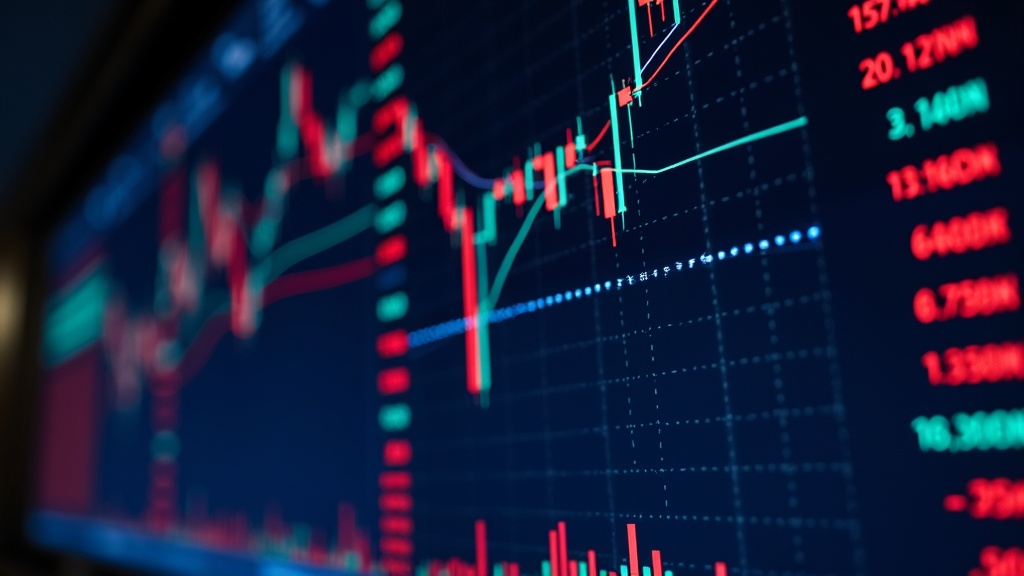Stocks are a big topic for anyone curious about investing and growing their money. I remember feeling overwhelmed with all the jargon and types when I first started. Breaking things down makes it a lot less intimidating. I’ll walk you through what stocks are, the main types you’ll run into, and the most common terms you’ll see on trading apps and financial news. Real-world examples like Apple (AAPL), Amazon (AMZN), and NVIDIA (NVDA) help make these ideas easier to grasp.

Table of Contents
What Exactly Is a Stock?
Stocks are pieces of ownership in a company. When you buy a stock, you’re getting a share of that business, no matter how small. So, if you’ve ever thought it’d be cool to “own” a bit of Apple or Amazon, buying shares is how that happens.
Companies sell stocks to raise money for things like expanding their business, launching products, or paying down debt. In return, investors (like you and me) can earn money if the company does well because the stock’s value can go up. Sometimes, companies even pay out a portion of their profits to shareholders as dividends, rewarding long-term holders for their trust.
The stock market connects buyers and sellers of these shares. Each trade reflects supply and demand—if more people want a stock, its price tends to climb; if lots of folks want out, the price might drop. It’s this constant tug-of-war that makes the market lively and sometimes unpredictable.
Main Types of Stocks
There are tons of ways people categorize stocks, but here are the big divisions I found most useful when I was starting out:
- Common Stocks: This is what most people think of when they talk about buying stocks. Common stockholders can get dividends (payments from profits) and have voting rights at shareholder meetings. The majority of stocks traded on exchanges like the NASDAQ (where you find AAPL and NVDA) and NYSE (where you find companies like Bank of America) are common stocks.
- Preferred Stocks: Preferred shares are kind of their own thing. You may get higher dividends and, if the company goes out of business, preferred shareholders get paid before common shareholders (but after debts). However, you usually won’t get to vote on company matters. Not all companies offer preferred shares—tech giants like AMZN (Amazon) only have common stock available.
Growth Stocks vs. Value Stocks
Stocks are also often sorted into categories based on how they behave in the market:
- Growth Stocks: These companies are expanding fast, and people buy their stock hoping for the price to go up a lot over time. They usually don’t pay big dividends. Tesla (TSLA) and NVDA (NVIDIA) are well known growth stocks; people buy for the potential increase in value, more than for dividends.
- Value Stocks: These are shares of companies seen as solid but maybe underpriced. Investors hope the price will rise as the market realizes their worth. Big banks or companies like Johnson & Johnson sometimes fall into this category. Value stocks can provide steady returns over years if you’re patient.
Blue Chip Stocks, Penny Stocks, and More
- Blue Chip Stocks: These are shares in big, reputable companies with long histories of stable growth. Apple (AAPL), Microsoft (MSFT), and Coca-Cola (KO) are all examples. People go for blue chips when they want less drama and more reliability. These companies form the backbone of many investment portfolios thanks to their reputation for weathering economic storms.
- Penny Stocks: These trade at low prices, often under $5 per share, and are usually little known or new companies. They carry higher risk and, although you sometimes hear about someone making a fortune, most investors tread carefully here. It’s easy to get caught up by the chance for big returns, but the risks are high and many penny stocks never move much.
Key Stock Market Terms Explained
Stock lingo can sound like a secret code. These are the terms I found myself Googling more than once, so having them in one spot is pretty handy:
- Ticker Symbol: Each stock has a short code, like “AAPL” for Apple or “AMZN” for Amazon. This unique symbol identifies the company on exchanges. It’s how you quickly track down or place trades on a specific stock.
- Dividend: A payment made to shareholders from company profits. Not all companies pay them. Apple does, but Amazon has always reinvested in growing the business instead. Steady dividends can give you a nice uptick in your portfolio over time, especially if you reinvest them.
- Market Capitalization (Market Cap): This is the total value of all a company’s shares. I like checking this to see how big companies are compared to each other. AAPL’s market cap regularly tops $2 trillion, which is pretty wild. Market cap also shows if a stock is considered small-cap, mid-cap, or large-cap, which carries its own set of risks and rewards.
- IPO (Initial Public Offering): This is when a company offers stock to the public for the first time. When NVDA first went public, it was a much smaller company. Now it’s a huge name in chips and AI. Investors often get excited about IPOs, but prices can be unpredictable right after a company first lists.
- Bear Market / Bull Market: A “bull market” means rising prices and optimism, while a “bear market” means falling prices and concern. I remember during the pandemic crash, everyone was talking about the sudden bear market. The news will throw these around a lot, and they help give a sense of the overall mood on Wall Street.
How Stocks Are Traded
Stocks don’t just exist; they’re bought and sold on stock exchanges, the most famous being the New York Stock Exchange (NYSE) and NASDAQ. Each stock trades during certain hours, and you’ll buy or sell them through a broker. These days, that can just be an app on your phone. Online platforms have made it easy for nearly anyone to jump into the market.
- Order Types: The main ones are “market orders” (buy/sell right away at the best price) and “limit orders” (set the price you’re willing to pay or accept). Limit orders can help you avoid paying more than you want in a fast market.
- Bid, Ask, Spread: The “bid” is what buyers want to pay; the “ask” is what sellers want. The difference (the “spread”) can matter if you trade frequently, especially for less popular stocks where the gap is wider.
- Volume: This tells you how many shares are traded over a specific timeframe. High volume means lots of interest, often with popular stocks like AMZN. Low volume usually means fewer buyers or sellers, so prices can swing more.
Short Term, Long Term, and Style of Investing
How you approach stocks can look pretty different depending on your goals and risk comfort. I learned quickly that there’s not one “right” way to invest; here’s what I see most often:
- Buy and Hold: This is the classic long term investing style, buying shares of strong companies (like AAPL or MSFT) and hanging on for years, riding out the ups and downs. It’s a simple method that suits people who don’t want to keep checking the markets every day.
- Day Trading and Swing Trading: Higher risk, this approach means buying and selling stocks within hours or days. People try to profit from quick price movements. You’ll see this a lot with smaller companies or really volatile stocks. While some traders can profit, it takes discipline, quick decision-making, and often a bit of luck.
- Dividend Investing: Some investors look mainly for stocks that pay steady dividends and reinvest the money earned to buy more shares over time. Utilities and big blue chip companies are popular here. Over the long haul, steady dividend payments can add up to big returns, especially when compounded.

What To Watch For as a Beginner
Getting started with stocks can be exciting, but there’s a learning curve. Here are a few things I wish I’d paid more attention to in the beginning:
- Volatility: Stock prices jump up and down all the time. It’s pretty normal, even AAPL or NVDA have days where they drop several percent. Staying calm during these swings helps avoid making decisions based on fear. Patience and staying focused on your strategy pay off in the long run in the stock market.
- Company Performance: Look at how the business is actually doing. Earnings reports, new product launches, and management changes all affect share prices. When AMZN releases a blowout quarter, you usually see action on the stock price right away. Reading company news helps you understand what’s moving the numbers and helps spot trends over time.
- Economic Conditions: Interest rates, inflation, and global news can push the whole market up or down, not just individual stocks. Broader forces are always in play, so it’s useful to keep an eye on headlines and understand that sometimes outside factors bump stock prices in ways that don’t seem to match the underlying company.
Research Tools and Resources
There’s a huge range of tools to help with research. Yahoo Finance, Google Finance, and broker platforms (like Fidelity, Schwab, or Robinhood) show current prices, news, charts, and financials for stocks.
It’s worth checking out SEC filings for deeper dives on how public companies are run.
Online forums and communities can also help answer questions and keep you up-to-date on the latest market moves, though it’s wise to double-check tips before acting.
Frequently Asked Questions
I get these questions a lot from friends just starting out:
What’s the difference between a stock and a bond?
Bonds are a type of loan you make to a company or government; in return, they pay you interest.
Stocks are ownership shares, so your return depends on the company’s success.
If stability is your thing, bonds might feel safer, but stocks present bigger potential rewards over the long term.
How do I know which stocks to buy?
Start by researching companies you know or whose products you use.
Check their financial health, look at their market position, and see what analysts are saying.
Careful research helps buyers make informed decisions.
It’s wise to try out a stock’s performance with a virtual portfolio or by tracking it for a while before spending real money.
Can I lose money?
Yes. Stock prices go up and down, and it’s always possible to lose what you invest.
That’s why I only use money I can afford to leave invested for a while, and I try not to panic if things dip for a bit.
Investing is a long game for most people.
What’s a stock split?
A stock split is when a company increases its number of shares to make the price per share lower, but the total value you own doesn’t change.
Apple (AAPL) and NVIDIA (NVDA) have done this in the past, making their shares more affordable for everyday investors.
Splits are often seen as a sign the company is confident about its future.
Final Thoughts: Building Confidence With Stocks
Getting familiar with types of stocks and common terminology makes investing a lot easier. I started by owning just a small piece of a big company I admired and built from there. The best part is seeing your knowledge, and maybe your portfolio, grow over time. Start simple, stay curious, and always keep learning. Set some goals, pay attention to market trends, and talk with other investors when possible. Before long, the market’s wild mood swings and odd phrases will start feeling like second nature!

Hold a Master Degree in Electrical engineering from Texas A&M University.
African born – French Raised and US matured who speak 5 languages.
Active Stock Options Trader and Coach since 2014.
Most Swing Trade weekly Options and Specialize in 10-Baggers !
YouTube Channel: https://www.youtube.com/c/SuccessfulTradings
Other Website: https://237answersblog.com/
